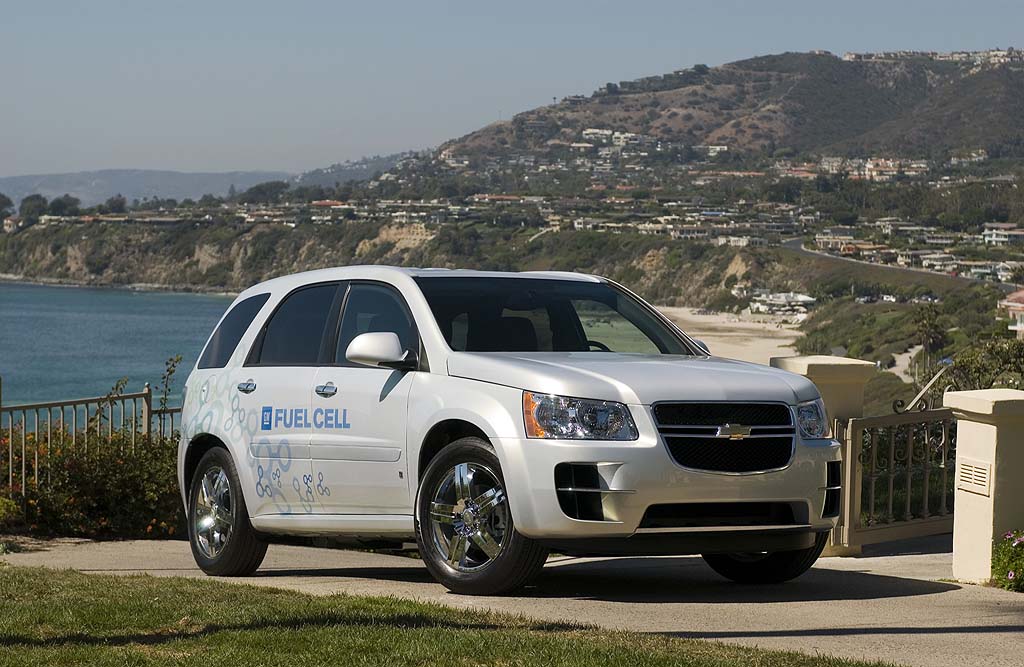We don't hear so much about hydrogen fuel-cell vehicles these days.
Just five years ago, before the announcement of either the 2011 Nissan Leaf battery electric car or the 2011 Chevy Volt range-extended electric, several auto companies were in the process of developing test fleets of hydrogen-fueled vehicles.
Mercedes-Benz is still testing its B-Class F-Cell hydrogen vehicle in limited numbers. Toyota maintains it will offer a fuel-cell vehicle for sale for $50,000 in 2015.
Most publicly, General Motors had its "Project Driveway," in which it provided more than 100 fuel-cell-powered Chevrolet Equinox vehicles to advocates, elected officials, celebrities, and regular Americans to test out.

First Mercedes-Benz B-Class F-Cell hydrogen fuel-cell vehicle delivery, Newport Beach, Dec 2010
Electricity, on the other hand, has ubiquitous distribution, which is what led us to call it one of the two fuels of the future--the other being liquid petroleum-based fuels, which have powered our vehicles for a century.
Now, analyst firm Pike Research has issued a pricey report (it's four figures, but you have to log in to learn the actual number) that looks at the question of how many hydrogen fueling stations will exist globally in 2020.
And Pike is considerably less optimistic than many of the numbers that were bandied about in the early 2000s. Its estimate is that there will be about 5,200 hydrogen fueling stations, in the entire world. That's far short of the necessary coverage for passenger vehicles in any country.

2007 Chevrolet Equinox Fuel Cell Vehicle
The largest driver of demand for hydrogen as a fuel 10 years hence will be ... forklifts, at 36 percent of the market. Another 27 percent was allocated to uninterruptible power supplies (UPS) to supply electricity in fixed locations.
Light-duty vehicles were projected to consume just one-third of the total hydrogen supply, and fuel-cell buses and scooters added a few more percentage points as well.
And that's remarkably different from the projections for "Hydrogen Highways" of a few years ago.
Perhaps the vision of "removing the car from the environmental equation," in the words of one General Motors executive, will take longer than expected.
+++++++++++












